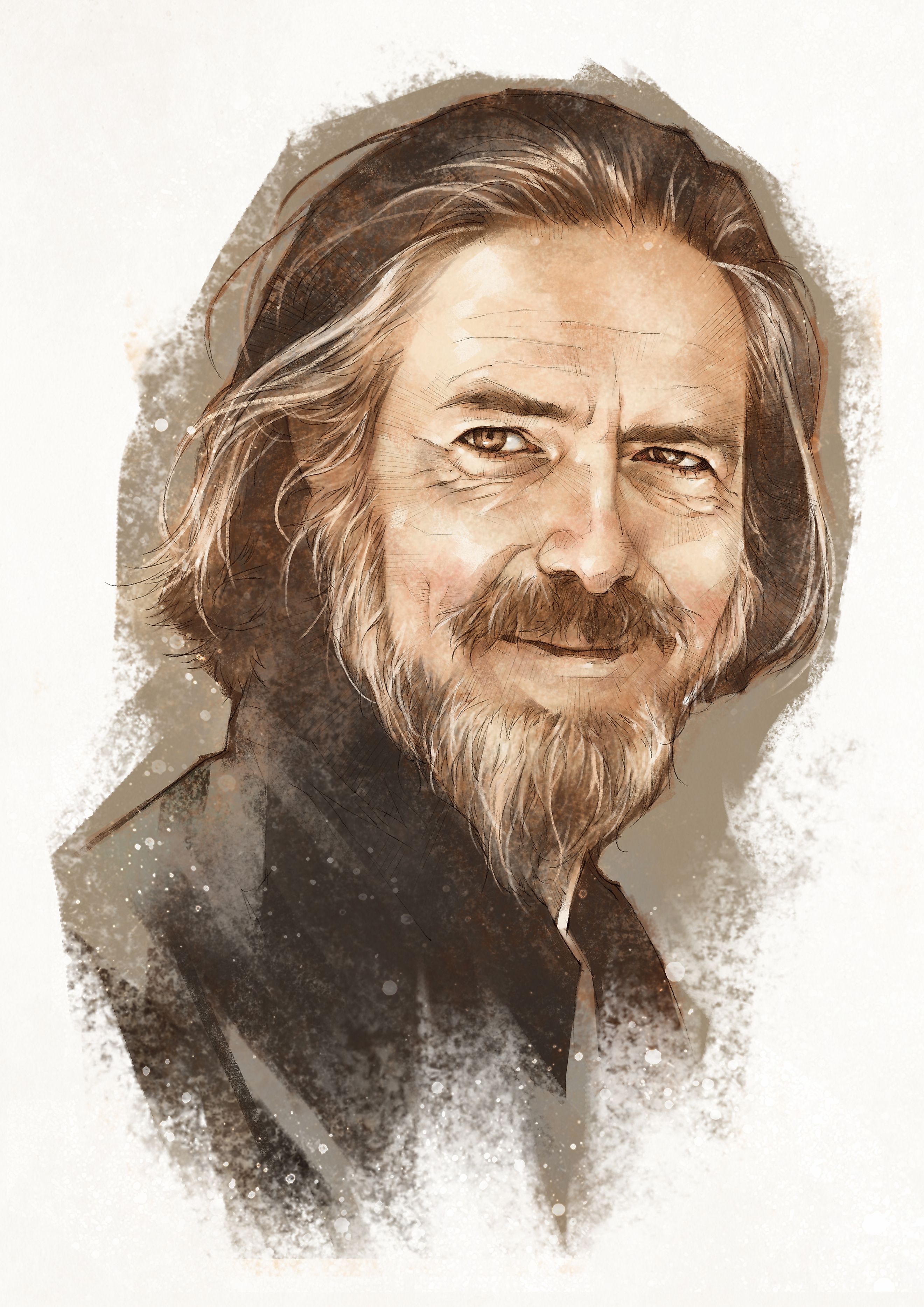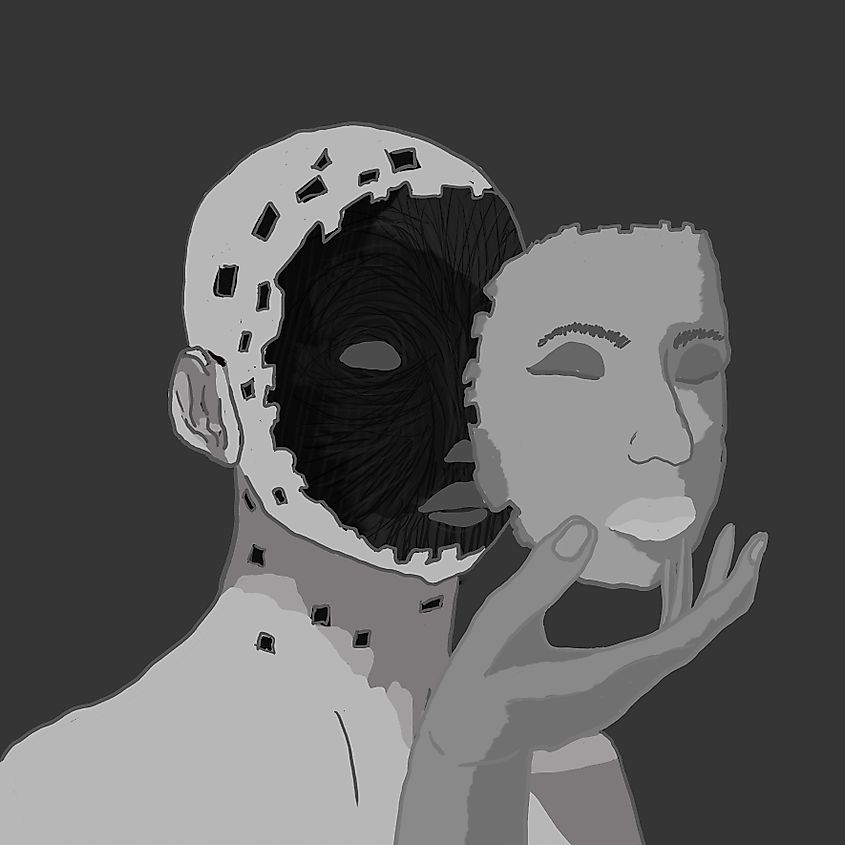
How To Reflect On Self And Ego According To Alan Watts
Alan Watts was a British-born American writer and philosopher. He was interested in Eastern philosophy and religion, such as Buddhism, Hinduism, and Daoism. For most of his life, Watts interpreted these religions and philosophies, which were new to the Western world at the time. People liked his work because it was informative yet entertaining, and it was influential in the counterculture movement of the 60s. Today his work is still popular, particularly for those interested in spirituality. While his work covers a wide variety of topics, a central focus of his work is on the question of "Who am I?"
A Skin-Encapsulated Ego

Alan Watts pointed out that this fascinating question has no true answer. We can never quite pinpoint who is viewing and living our lives. Many people in the Western world identify the "I" with their ego and identify this as their source of consciousness. Alan Watts called this conception, which he claimed many people have of themselves, a skin-encapsulated ego.
While most people think of their ego as in their body, people don't usually identify their entire bodies as their true selves. Alan Watts noticed that how people use the word "I" relates to how they view themselves and their bodies. For example, people don't say "I am a body", instead people say "I have a body." This implies that the body is somehow outside the self. Similarly, Watts observed that people don't identify with every part of themselves. For example, people say, "My feet, my hands, or my teeth." According to Watts, most people think of "themselves" as being in the center of their heads, somewhere in the middle behind the eyes. The rest of the body is seen as something that dangles from this self. This governing body inside the head is what most people call the ego.
The Ego as a Hallucination

Viewing ourselves inside the head, as an ego, is what Alan Watts called "a dangerous hallucination." This idea gives people a false belief that they are the center of consciousness, of energy, of responsibility. However, while people try and separate themselves from their bodies, this is almost an impossible task. Watts points out, that our bodies get sick, tired, old, and eventually wither and die. There is no escaping the constraints of our bodies, even if we feel a separation from them.
Watts compared this feeling of separation from the body to feeling like a chauffeur driving your body and the vehicle around. He also pointed out that people often feel the world outside their bodies isn't safe. We might view the world around us as full of people who are not going to be nice to us because we believe they are only thinking of themselves. The world is also full of strange animals, plants, and rocks that we have to live with. Alan Watts said in this worldview, we see ourselves as centers of sensitive, tender consciousness, confronted with a world that doesn't care about us. This tension leads many people, in Watts' view, to pick a fight with the external world and try to beat it into submission to their will. This has led humans to try to conquer the world around them because we feel caught in a world that doesn't always go our way. The separation of the self from the body and the world has led people to sometimes destroy their bodies and the environment.
What Are We?

While Alan Watts believed the ego was a hallucination, he believed the body was very real. In fact, according to him, the self is the body. He disagreed with the conception that people are an ego inside a bag of skins. Beyond that, he stressed the body's dependence on the natural environment. The human body needs air, nutrition, water, and to be on a certain type of planet. These environmental conditions are just as important as the conditions of our physical health. Since the body is so dependent on these environmental conditions, Watts believed there was no way of separating the body from the natural environment. This meant the environment, too, was part of the self.
How Conventional Views of The Ego Arise

Watts's view is not the common way people view themselves. Watts's view of the self meant viewing the entire body and the environment as part of the self. This might lead you to wonder how the idea of our ego comes to exist.
According to Watts, the ego is made up of the image of the self. This is largely made up of what other people tell us we are. Many people tell us what our role in life is, and we are expected to absorb the ideas of these roles and act them out by the people around us. In this way, Watts claimed we identify ourselves with a certain way of acting. However, Watts argued this caricature we have of ourselves is nothing more than an illusion. While people might argue they still feel a sense of "I", Watts believed this was something comparable to muscular strain. We use willpower to perform the caricature of ourselves which reinforces our idea of our ego.
After learning about Watts' view of the ego as a hallucination, you might wonder how to get rid of this hallucination. Watts heard this question many times and argued this was the wrong question to ask. Since the ego doesn't exist in the sense we think it does, you cannot get rid of it. We particularly cannot escape the hallucination since any attempt to do so will be by using our egos. This creates a vicious cycle where we are using our egos to try and get rid of them. Instead of trying to get rid of our egos, Watts suggests we live in our bodies, paying attention to our feelings, emotions, and the world around us. The message is, overall, to be more present, something we can all use in today's busy world.











